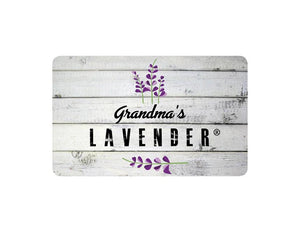Triclosan

Triclosan was commonly used as antimicrobial agents in many hand sanitizers, soaps, and detergents.
It was first introduced to the market in the 1970s as a antimicrobial agent primarily used in hospital surgical wards. By the ends of the 1990s household ‘antibacterial’ soaps and cleaners were widespread in the United States.
Initially, companies used triclosan for health purposes, it wasn’t out of nefarious intent. It was added to a host of consumer products to kill bacteria and fungus and odor. At the time, there hadn’t been a lot of toxicology studies done to test for safety or even efficacy of the ingredient. Over the last few decades, the population has been so exposed to triclosan that it has shown up in urine tests worldwide.
Widespread use of triclosan prior to 2013 had very little regulation by the FDA. The FDA stated in 2013 that “there were unresolved safety considerations regarding daily long-term use,” mainly because there hadn’t been human health studies completed. The agency left it to companies to provide evidence to support the use of triclosan. Gradually over the past five years companies have slowly faded out their use of triclosan.
The use of triclosan is concerning because it is believed that it is an endocrine disruptor, can bioaccumulate, and create the emergence of bacteria resistance to antibodies and antibacterial products. Although many companies have discontinued its use and it is disappearing from the market place, Health Canada deems triclosan safe for human use. They allow it in some cosmetic products if the concentration is below a certain level.
Research is still being conducted to study the effects the ingredient has on the human body. Some studies have found that triclosan can affect human mast cells, which is an important part of the immune system. Triclosan inhibits the mast cell from functioning properly at amounts that are comparable to what people would use in hand sanitizer or toothpaste. It has also been found that it can affect the mitochondria of human skin cells. Disfiguration of these energy powerhouse cells has been seen in real time under a microscope.
*Although the use of triclosan has been greatly diminished in the past few years it is still a good idea to check the ingredient label.*
Phthalates

Phthalates (Dibutyl phtalate) is a synthetically produced chemical used in fragrances. It is also used as a plasticizer and a solvent. It is oily, odorless, and colorless. Its used to make plastics more flexible as well as to add more desirable qualities to insect repellant, hair sprays, and nail polish. It is a common ingredients found in products like hair spray, insect repellant, nail polish, household cleaners, plastics, glues, and paints.
It can be listed under a number of different names such as 1,2 benzenedicarboxylic acid, dbp (ester), dibutyl ester, butyl phthalate, 1,2-benzenedicarboxylate, DBP, dibutyl ester 1,2-benzendicarboxylic acid, dibutyl phthalates, benzene-o-dicarboxylic acid di-n-butyl ester, celluflex dpb, di-n-butylphthalate, dibutyl. Because it is also used as a fragrance ingredient it can be difficult to know what product it is in because companies are protected under the ‘trade secret’ loophole of not having to disclose their fragrance combination.
The European Commission banned the use of dibutyl phthalate in personal care products and cosmetics. The state of California has classified it as a developmental and reproductive toxin. Some of the possible health effects from fetal exposure are infertility, cryptorchidism, sperm development issues, effects similar to human testicular dysgenesis syndrome, and anatomical changes to the reproductive development of baby boys.
